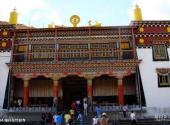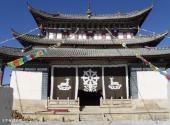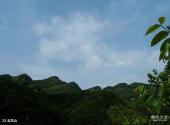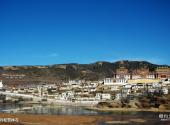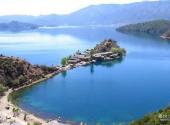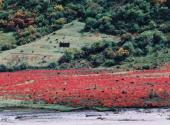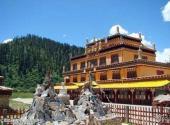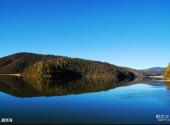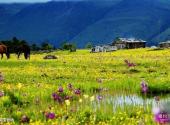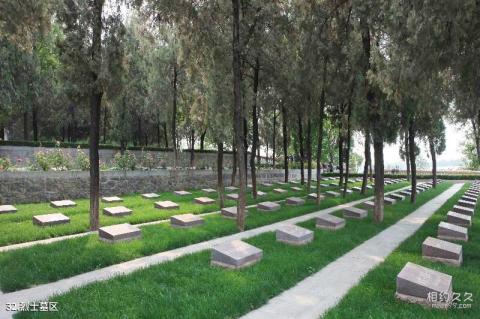
Scenic spot introduction:
Yunnan Shangri-La has become the paradise that the world has been looking for for a long time with its pristine natural scenery such as snow-capped mountains and canyons, alpine lakes, sea of flowers and meadows, ancient and profound religious and cultural connotations, and rugged folk customs with unique regional characteristics. Shangri-La, known as "Zhongdian" in ancient times, means "good luck and good fortune" in Diqing Tibetan. It is located in Shangri-La County, Diqing Tibetan Autonomous Prefecture, Yunnan Province. It is located on the southern edge of the Qinghai-Tibet Plateau and in the hinterland of the Hengduan Mountains. It is the intersection of Yunnan, Sichuan and Tibet. It is also the hinterland of the world-famous "Three Parallel Rivers" scenic spot, with a total area of 11,613 square kilometers. Shangri-La County is one of the counties with the largest area and the lowest population density in Yunnan Province. Due to its size, virgin valleys and peaks abound. The territory is home to towering snow-capped mountains, vast grasslands, and deep valleys. There are 470 snow-capped mountains above 4,000 meters above sea level. The mountains are squatting majestic and full of postures. "The mountains are steep and the gorge is thundering, and the dead trees and vines are twilight." Tiger Leaping Gorge attracts Chinese and foreign tourists with its majestic momentum. On the desolate Tea Horse Road, there are countless Shimen Pass and the wonder of Western Yunnan - Secang Da The Rift Valley opens its arms to tourists with its wonderful posture. Deep in the snowy mountains, in the hinterland of the grasslands, countless quiet, quiet, deep and mysterious mountain lakes in the forest call for people to lift their beautiful veils. In addition to Tibetans, the main ethnic group in Shangri-La County, there are more than a dozen ethnic groups such as Han, Naxi, Yi, and Bai, forming a diverse ethnic culture. Colorful folk customs and grand ethnic festivals, songs and dances have become a beautiful corner of Shangri-La's tourism landscape. Religious culture is one of the most powerful cultures here. Tibetan Buddhist culture deeply affects the Tibetan people's clothing, food, housing, transportation, speech and behavior. The magical and beautiful mountains and rivers, as well as the accumulation of ancient ethnic culture, have given birth to the kind and broad-minded characters of all ethnic groups in Shangri-La County.Attractions distribution:
The main attractions in Shangri-La include: Garden Songzanlin Monastery, Blue Moon Valley, Napa Sea, Observation Deck, Baishui Terrace, Dukezong Ancient City, Ancient City Sutra Collection Hall, Zhongdian Sutra Collection Pavilion, Abu Old House, Diqing Prefecture National Costume Tourism Exhibition Center, Sajiao Poetry Institute, Yangkeyokang Tibetan Customs Park, Conggu Grassland, Tiansheng Bridge, Nairi Natural Flower Grassland, Xiagui Tibetan Cultural Ecological Tourism Village, Yangtang Song, Tiger Leaping Gorge, Haba Snow Mountain, Yila Grassland Style Garden, Xiaozhongdian Flower Sea, Bigu Tianchi, Bodhidharma Cave, Gardandong Bamboo Forest Temple, Pudacuo National Park, Shuodu Lake (Shuodu Lake), Bita Sea, Shangri-La Grand Canyon, Ni Ru, Nanbao Ranch, Colorful Waterfall, etc.Scenic spot features:
Photography, hiking, natural landscape tours, religious and cultural tours, temples, ancient cities, snow mountains, grasslands, lakes, canyonsTravel Notes of Travellers:
- Travel guide: The 100 most beautiful scenic spots in China!
- Travel tips: Best recommended travel tips for October
- Travel tips: Best recommended travel tips for September
- Travel Guide: China’s Six Most Beautiful Canyons Travel Guide 2018
- Travel tips: Best recommended travel tips for May
travelling guideline:
Shangri-La has a large number of ethnic minorities, which has also given rise to a wealth of ethnic festivals: the horse racing meeting on the fifth day of the fifth lunar month is the most solemn festival in the county. At this time, good players gather, famous horses neigh, and the racecourse becomes a hero meeting; "Damba Festival" , "Gedong Festival" are two festivals with rich religious colors, with unique and mysterious forms, rich and thought-provoking connotations; festivals such as "February 8th" of the Naxi people and "Torch Festival" of the Yi people have become popular among people of all ethnic groups. The best way to express your emotions. Tourists can participate in it and feel the rich local ethnic customs.
Best time to visit:
May-July and September-October.
Shopping recommendations:
(Local specialties) Matsutake mushrooms, saffron, wild vegetables, highland barley wine, white snow tea, red snow tea, Tibetan medicine, Yunnan green, Ganoderma lucidum, wooden bowl,
Coptis chinensis, Armillaria fungus.
(Special delicacies) Beef, tsampa, Tibetan silver, butter tea, Shudu Schizothorax, medicinal dishes, milk residue, yogurt, pipa meat,
Buckwheat cake, lump meat .
Scenic spot location:
China>Yunnan Province>Diqing Tibetan Autonomous Prefecture>Shangri-La City>Jiantang Town
How to get there:
Airplane: You can take flights from Kunming, Chengdu, and Lhasa to Shangri-La. There are daily flights from Kunming to Shangri-La, 2 flights per week from Chengdu to
Shangri-La during the tourist season, and 1 flight per week from Lhasa to Zhongdian.
Train: There are no railways in Shangri-La County and Diqing Prefecture, but you can take a train to Kunming, Dali or Lijiang, and then choose to fly or car
to go there.
By car: Take a direct bus from Kunming West Bus Terminal (northeast of the intersection of Chunyu Road and Yining Road, Majie Town, Xishan District, Kunming City) to
Shangri-La. The bus departs at 9:00 every morning; the night bus departs from 18:30 to 20:30 every afternoon
every half hour. The journey takes about 12 hours. The morning shift is about 210 yuan, and the afternoon shift is about 180 yuan.
Scenic area map:
Click to expand the scenic area map
Shangri-La ticket prices:
Garden Songzanlin Monastery: 85 yuan;
Pudacuo: 190 yuan, student ticket 120 yuan;
Blue Moon Valley: 220 yuan (including ropeway);
Napa Sea: 30 yuan;
Baishui Terrace: 30 yuan;
Dukezong Ancient City: free admission;
Zhongdian Sutra Pavilion: 30 yuan;
Diqing Prefecture National Costume Tourism Exhibition Center: 10 yuan;
Shangri-La Grand Canyon: 20 yuan, half price with student ID card;
Cizhong Church: free;
Tiger Leaping Gorge: 50 yuan;
Xiagui Tibetan Cultural Village: free.
Scenic area opening hours:
(Gaden Songzanling Monastery) 8:30-17:30
(Blue Moon Valley) 8:00-18:00
(Napa Sea) 8:30-18:00
(Dukezong Ancient City) 8:30-23:00
(Zhongdian Sutra Pavilion) 9:00-17:00
(Shangri-La Grand Canyon) 8:00—17:00
(Cizhong Church) 8:00—17:00
(Tiger Leaping Gorge) 9:00—18:00
( Baishui Terrace) open all day
(Xiagui Tibetan Cultural Village) open all day
(Diqing Prefecture National Costume Tourism Exhibition Center) 8:00-18:00
(Pudacuo National Park) November to March: 8:00-16:00; April to October: 8:00-17:00

